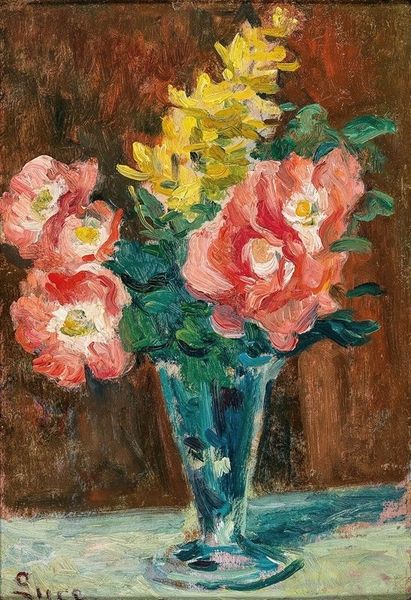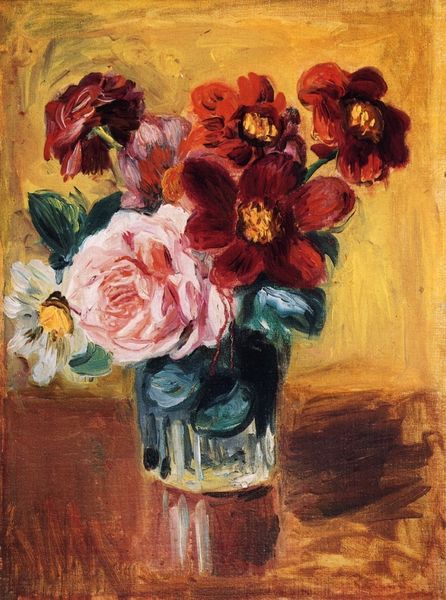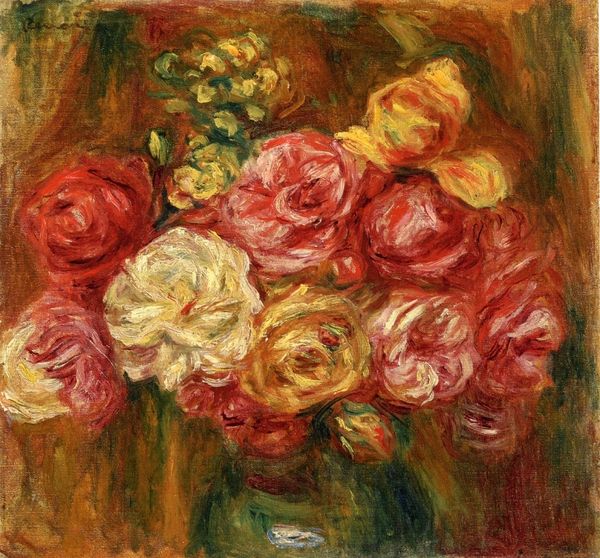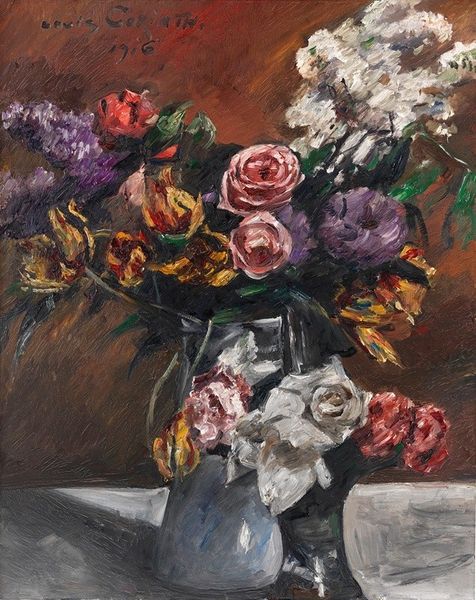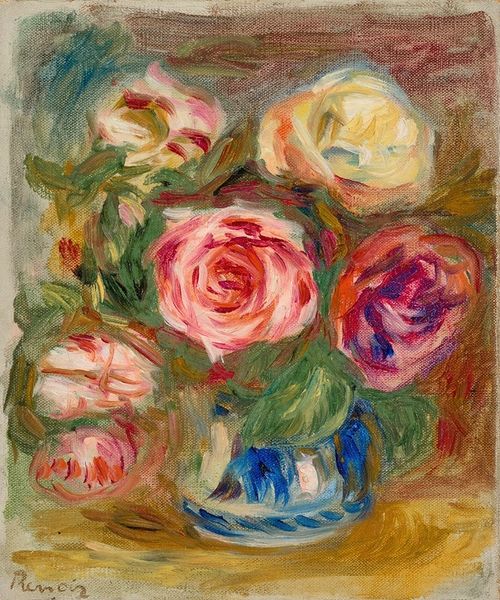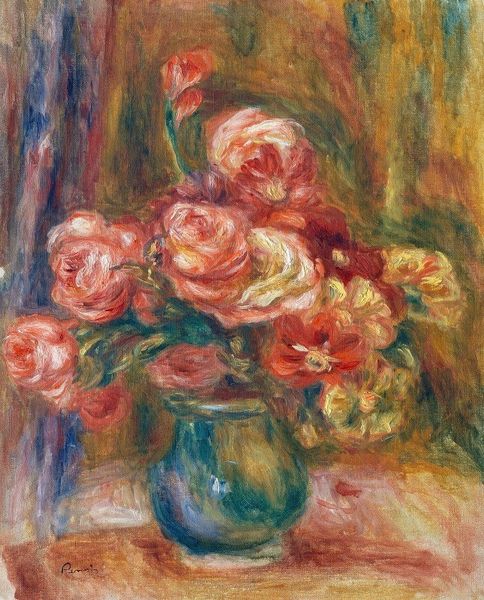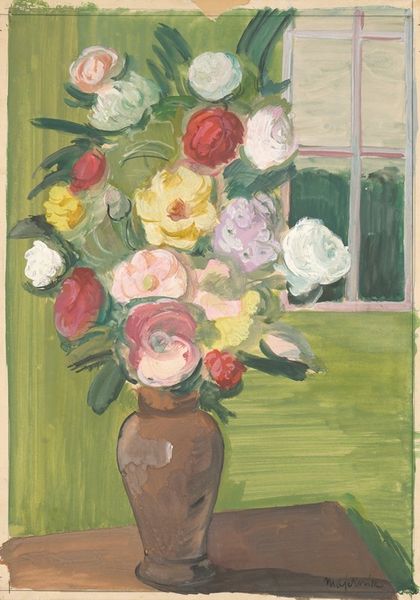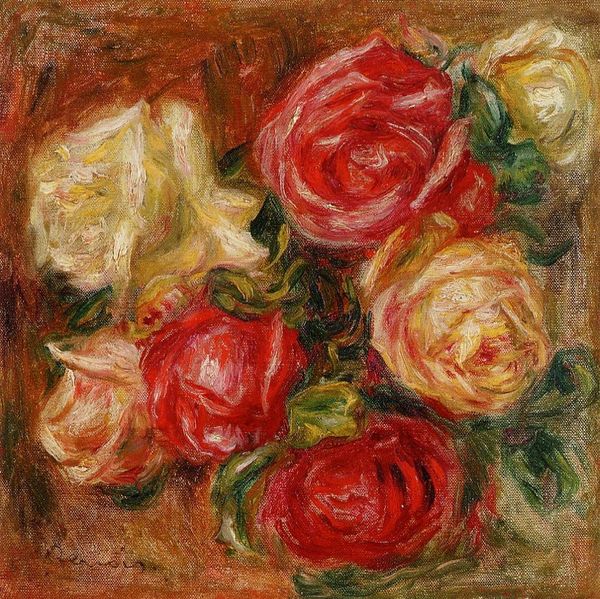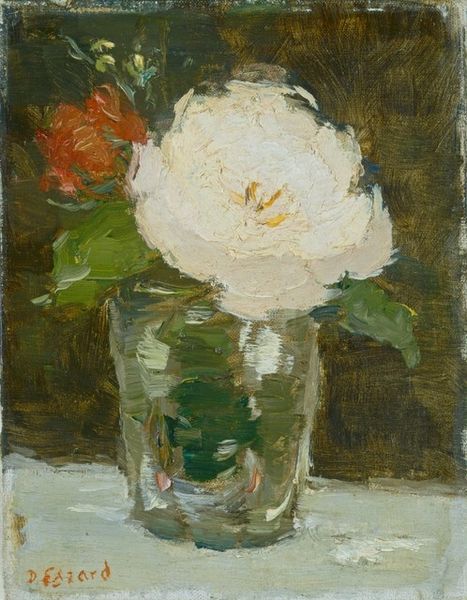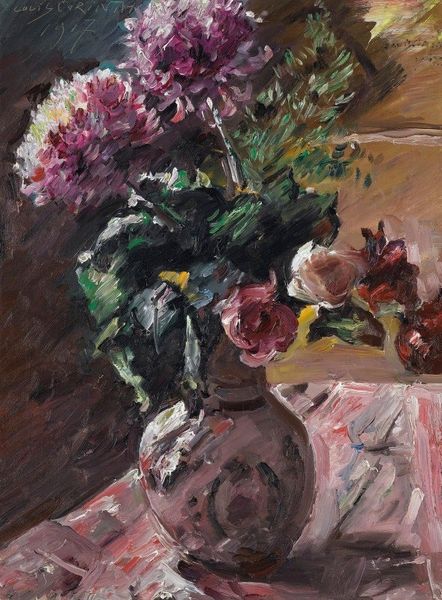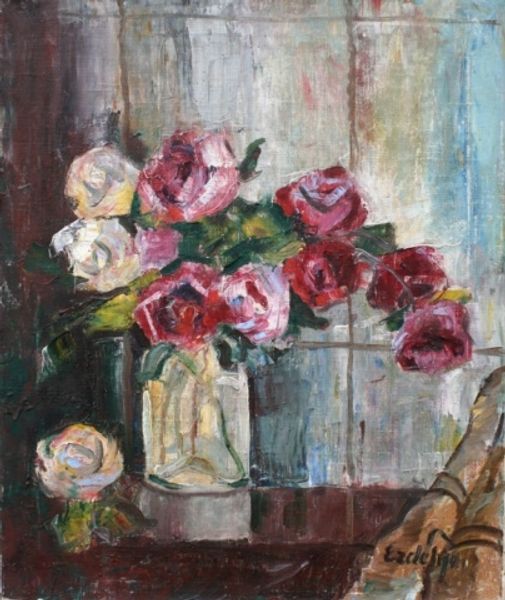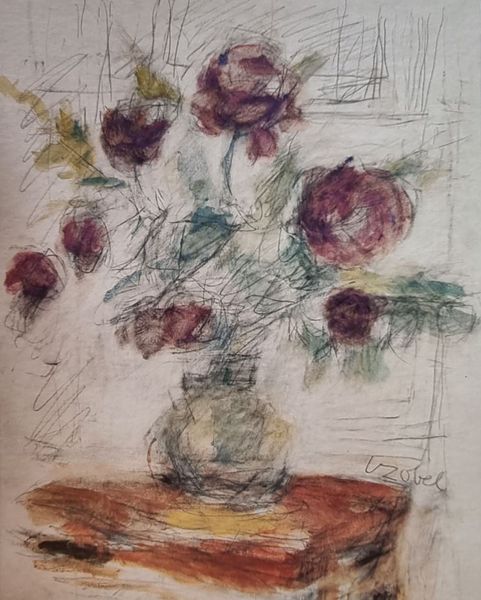
Copyright: Avigdor Arikha,Fair Use
Editor: This is Avigdor Arikha’s "Roses," created in 1995. It's a pastel drawing of, well, roses. I’m struck by the way the colors feel both vibrant and delicate. What symbolic weight do you see in the image of roses represented here? Curator: Roses, of course, are deeply embedded in our cultural memory. They've represented love, beauty, passion, even secrecy for centuries. But consider the *specific* way Arikha presents them: wilting, perhaps past their prime. Doesn’t this suggest a meditation on the fleeting nature of beauty and the poignancy of the transient? Editor: Yes, I see what you mean. It’s not just about romantic love then, but perhaps loss, too. Are there specific artistic traditions that contribute to this interpretation? Curator: Absolutely. Think about the *vanitas* tradition in art – still lifes that remind us of our mortality. While not a traditional vanitas, Arikha’s “Roses” evokes similar sentiments. The pastel medium itself, with its inherent fragility, reinforces this sense of ephemerality. The medium mirrors the message. What feeling does the broken colour give you? Editor: That makes sense. The fragmented texture almost seems like the flowers are disintegrating before our eyes. The colour gives a very intimate feeling. It's fascinating how Arikha uses such a conventional subject to explore deeper themes. It has much more of a modern outlook, using modern philosophies of aesthetics, perhaps. Curator: Precisely. By engaging with these traditional symbols in a fresh, contemporary way, Arikha creates a powerful and resonant image. It reminds us that even familiar symbols can hold new meaning depending on the hand of the artist. Editor: I'll never look at a bouquet of roses the same way again! Curator: And that’s the power of art, isn’t it?
Comments
No comments
Be the first to comment and join the conversation on the ultimate creative platform.
